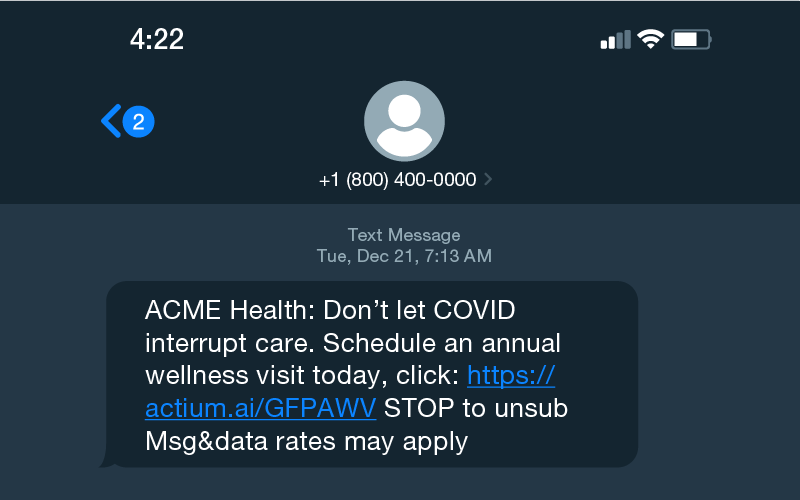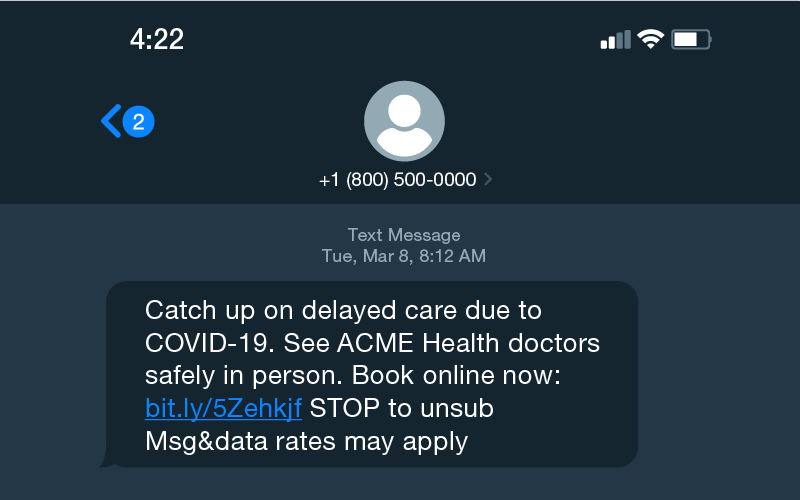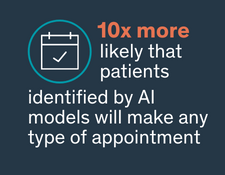Hospital revenue and marketing budgets took a hit during the pandemic. To justify spend, healthcare marketing ROI must be proven. Here’s how to do it.
With elective procedures on hold during the pandemic, hospital and clinic revenue took a hit. Now with the Great Resignation, they’re also losing staff. Both of those challenges can lead to budget cuts or increased scrutiny.
When revenue drops, marketing is often one of the first areas to be cut. Even though every healthcare executive would agree marketing is essential, it can be hard to connect the dots between all of the diverse marketing activities and revenue.
True, some components of marketing can be hard to measure. Reputation, community sponsorships, free screenings, social media — those are vital to your brand, but difficult to link to revenue creation. The key to marketing ROI is not to measure everything, but to connect the dots between marketing tactics designed to drive revenue (like campaigns) and the resulting customer actions.
The ABCs of ROI: Data-Driven Healthcare Marketing
Remember when your math teacher told you to “show your work”? It’s even more vital in healthcare marketing. By demonstrating your team’s ability to drive appointments and revenue — not just clicks and likes — you’ll not only preserve (or even increase) your marketing budget, you’ll also be making a measurable positive impact on organizational success.
Assess Which Metrics Matter
As with any marketing initiative, you can generate revenue either by acquiring new customers or creating more volume with current customers. How do you know where to spend your time? That’s where ROI comes in: with better understanding of cost and revenue, you will have a better gauge for how to balance your time and resources.
One of our healthcare system clients has a great example of the power of healthcare marketing ROI. They developed a model in partnership with finance. Using a ratio of 8:1 ($8 in return for every $1 spent), with a focus on data-driven marketing, they were so successful in showing ROI that their marketing budget increased, despite a business slowdown.
Finance can be a great partner in helping to determine average revenue per appointment, as well as any associated costs, to develop a net revenue figure that aligns with how your system reports revenue and impact. Marketing needs to evaluate costs compared to results. How much do the various marketing tactics cost, and which can be linked to revenue? Start with those first, so you don’t get bogged down trying to analyze too many factors.
Take SMS messaging to existing customers, for example. You can track who clicks on links to schedule appointments (highly measurable), and the cost is negligible. Its numerous advantages include:
- You can make a direct link between the action and the response (compared to a billboard, for example).
- It takes relatively little time to create the messages, compared to social media campaigns, which need a high level of creativity and volume to generate results.
- SMS are also more direct and personal than social campaigns.


The key is to focus not on everything that can be measured, but rather on which indicators tell you what marketing activity leads to revenue. Engagement on a social post is great, but it’s hard to tie that to increased pre-diabetes screenings, for example. The more marketing can focus on measurable actions that tie directly to revenue generation, the better for proving ROI.
Be Predictable and Proactive

Once you know what metrics count, the next step is to create evergreen or “always-on” campaigns. After all, healthcare never stops, so why should your patient outreach campaigns? “Always on” sounds like constant messaging, but it’s not. It’s intelligent campaigns that use the data in your EMR to continually find the right audience for your message or objective, and adjust message volume (and type) based on appointment availability.
Actium Health’s CENTARITM is a tool that can do just that. Not only can it adapt based on availability, it also knows what has already been scheduled for the future. CENTARI also uses propensity and predictive models to identify and predict the likelihood of a patient needing a specific medical service.
Using artificial intelligence as the backbone of patient activation campaigns means marketing can set up proactive campaigns that reach patients most likely to respond, with services they need (as patients) and the business needs (based on staffing and revenue goals). In other words, setting up intelligent campaigns gives marketing that ability to create predictable volume that ties to revenue and services.
Collaborate
We mentioned working with finance to create an ROI model that works for your system, and that’s key. It’s also important to build relationships with your service lines and cross functional partners to stay on top of new service offerings, resource constraints, new technologies, and other trends that can either help drive and affect your efforts to acquire new and activate patients.
In terms of collaboration and proactive campaigns, Virtua Health is a great example of multiple teams working together along with the community. The result was a dramatic increase in mammogram appointments by activating patients most likely to respond to, and benefit from, outreach.
Taking the Time Saves Time
While proving ROI can feel like “one more thing” on your already long to-do list as a healthcare marketer, it has so many advantages that it’s worth the time and effort.
Proving the value of your marketing helps:
- Maintain (or increase) budgets
- Deliver more business value (because you’ll know what to do more of, driving more results)
- Collaborate more effectively across business functions
One of any organization’s challenges is knowing where to put resources for the best results. With intelligent campaigns, you’ll have a clear path forward toward healthier revenue and patients.
Interested in learning more? Watch Paul Matsen, CMO of Cleveland Clinic, discuss his strategies and experiences for how healthcare marketers can be innovating today and demonstrating results.


